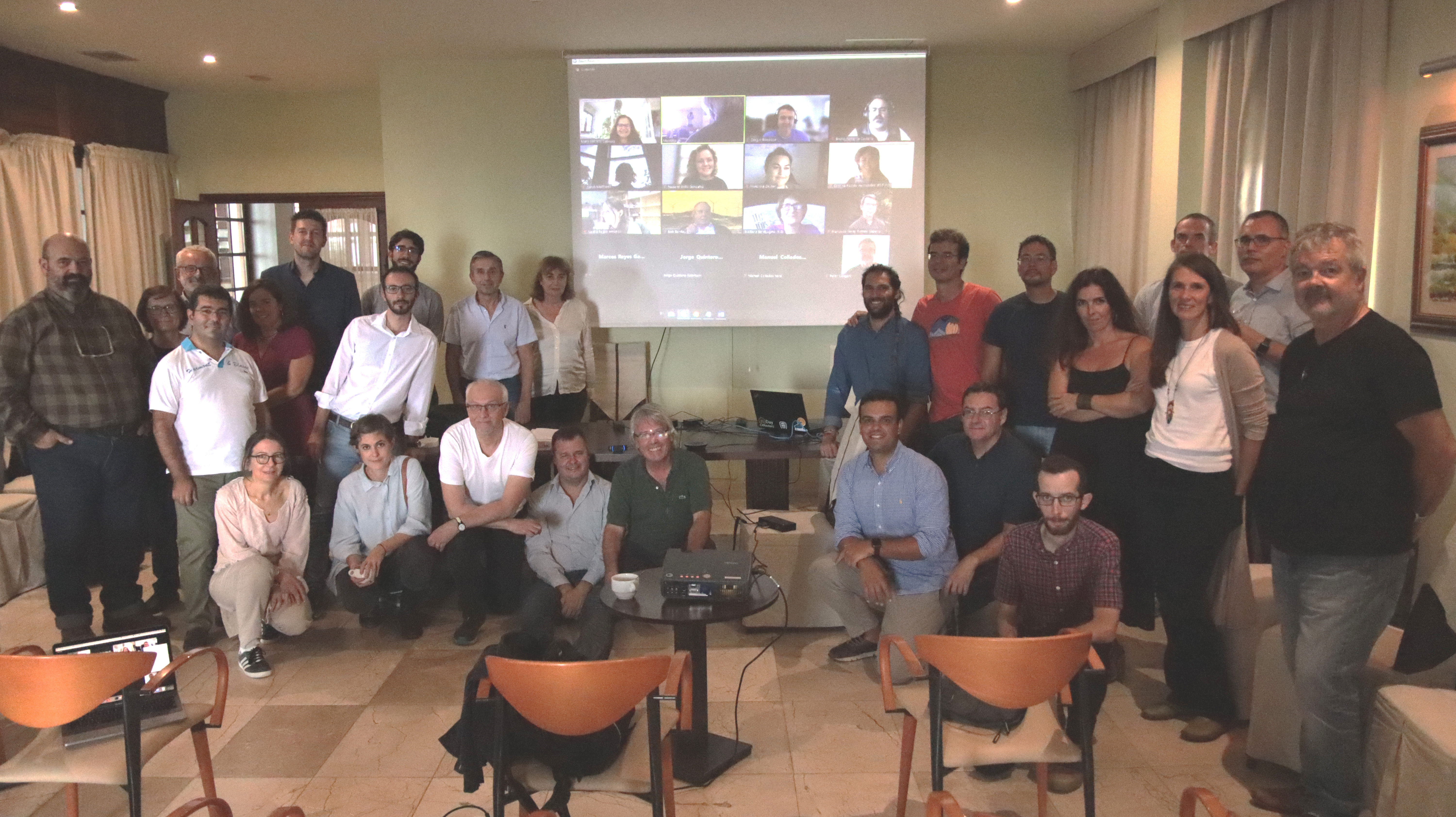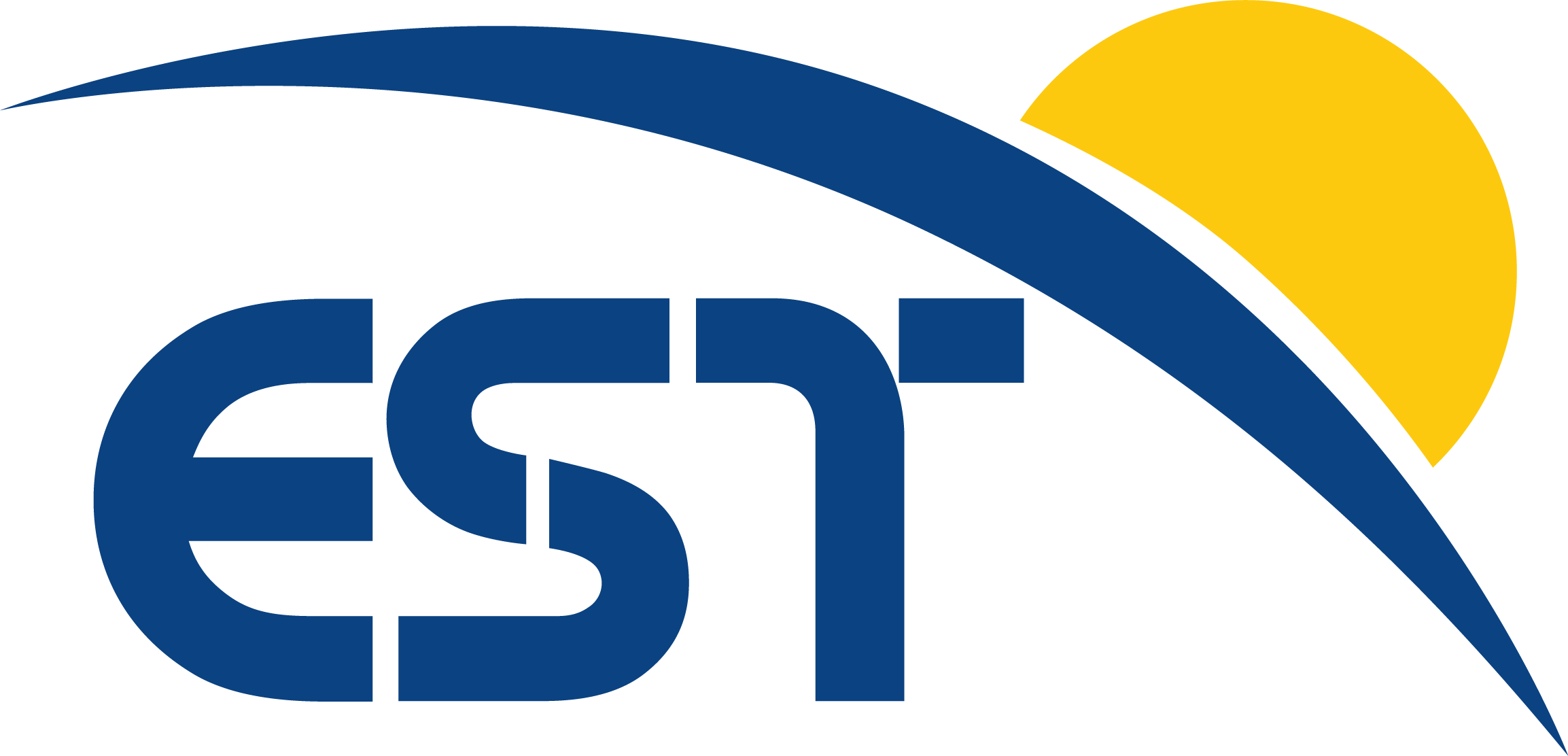The EST Project Office presented the EST preliminary design to the SAG on September 27, 2022.
 SAG meeting in Los Cancajos (La Palma, Spain), on September 27, 2022.
SAG meeting in Los Cancajos (La Palma, Spain), on September 27, 2022.
On September 27, 2022, the EST Science Advisory Group (SAG) met on La Palma to hear how their scientific input was converted into the EST preliminary design.
The SAG was formed in November 2017 and has worked for almost 5 years. In 2017, the SAG started with revising the Science Requirement Document (SRD), developed during the Conceptual Design Study from 2008 to 2011. The revised SRD was finalised in 2019 and contained programmes of multi-wavelength spectro-polarimetric observations designed to measure and understand fundamental magneto-radiative plasma processes, which dynamically couple the various layers of the outer solar atmosphere.
The following year was devoted to translate the scientific requirements into technical specifications for EST. This is a crucial process to guarantee that the telescope and its instrumentation can fulfil the planned scientific objectives. For that reason a review panel of instrumentation experts was formed. As a result, the communication between scientists and EST Project Office was facilitated, and the technical specification were worked out and finalised in the course of 2020.
In 2020, a fundamental change of the optical concept was undertaken. The dynamic solar atmosphere requires to accomplish measurements on time scales as short as seconds. As such measurements also require high spatial and spectral resolution at high polarimetric accuracy, the telescope should be as photon efficient as possible. In those years, new technologies were developed that opened the possibility to reduce the number of telescope mirrors and thereby increase the photon flux substantially: adaptive secondary mirrors became feasible, and it was decided to investigate an optical concept that integrates all deformable mirrors of the MCAO system into the telescope. This concept drastically improves the photon efficiency, since the transfer optics that comprised 7 mirrors in the preliminary design could be dismissed completely. Instead of 14 mirrors, the new EST design only needs 6 mirrors and a doublet lens, assuring the highest possible photon flux. Another consequence of the new design is that fewer mirrors improve the optical quality and substantially facilitate the optical alignment. The only potential drawback was that the transfer optics would have compensated for the image rotation which cannot be avoided in the alt-az mounting of the telescope. Therefore it was necessary to investigate the amount of image rotation, to make sure that it would not harm the science data.
Once the technical specifications of the telescope were finalised, the SAG focused on the light distribution and a concept of the post-focus instrumentation. The existing concept from 2011 was outdated not only technically, but also in terms of scientific objectives. It became clear that the evolution time scales in photosphere and chromosphere are shorter than anticipated during the preliminary design phase. Hence, the high photon flux had highest priority and the aim is that each individual instrument operate such that it receives all photons of a particular wavelength. For this reason, beam splitters that split the intensity were abandoned and only dichroic beam splitters are used. In the new concept, dichroic beam splitters allow to observe in four separated optical arms: 380-500 nm, 500-680 nm, 680-1000 nm, 1000-2300 nm. Each arm holds an integral field unit that performs spectro-polarimetric measurements. Additionally, tunable filter spectropolarimeters are foreseen in three of the arms. They will operate on a circular field of view with a diameter of 60 arcsec. The circular field of view is important not to loose a particular region of interest due to image rotation. This light distribution concept was approved by the SAG in May 2021, and since then the instrument teams are developing conceptual designs.
The EST Project Office engineers presented and explained the details of the new design at the SAG meeting on La Palma, and informed the SAG about the results of the calls for tenders for the various sub-systems of the telescope. The SAG members were extremely impressed about the convincing design and acknowledged the vast amount of work delivered by the EST Project Office.
